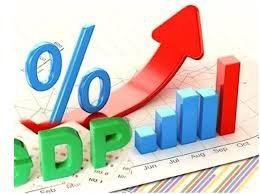The National Bureau of Statistics (NBS) has released Nigeria’s rebased Gross Domestic Product (GDP) report for Q1 2025, unveiling a significantly expanded economy with real GDP growth rising to 3.13% year-on-year, up from 2.27% recorded in the same quarter of 2024.
This marks a meaningful upward shift in economic size and structure, with Nigeria’s nominal GDP for 2024 now valued at ₦372.8 trillion ($243.9 billion)—a 36.8% increase from the pre-rebased estimate of ₦272.5 trillion ($181.5 billion).
Why Nigeria’s GDP Was Rebased
The GDP rebasing, which updates the base year from 2010 to 2019, aims to better reflect Nigeria’s evolving economic structure. This methodological update allows for more accurate measurement of emerging sectors and reclassifies activities across services, industry, and agriculture.
Key changes include:
New weightings across sectors, especially Services and Trade
Enhanced data collection and coverage
Closer alignment with international standards for GDP reporting
Explainer: GDP Is Growing—But Is It the Right Measure?
The release of the rebased GDP figures has reignited debates over the true state of Nigeria’s economy, particularly in comparison to the administration of former President Goodluck Jonathan (GEJ), when GDP first crossed the $500 billion threshold after a 2014 rebasing.
Responding to criticisms that today’s economy is “half of what it was under GEJ,” Professor Afees Salisu, Director at the Centre for Econometrics and Applied Research (CEAR), University of Ibadan, offered the following nuanced take:
“Honestly, there is nothing wrong with that statement from a statistical perspective. It simply indicates that the GDP under a particular regime was higher than it is under the current one. This is pure statistical evidence that cannot be disputed.”
However, Professor Salisu warned against over-relying on output-based metrics like GDP to judge economic progress, calling instead for deeper analysis of inputs and outcomes:
“We often overlook the inputs that contribute to a particular output. For instance, how much additional debt was accumulated and fiscal expansion accommodated to finance the reported growth?”
He questioned whether the high GDP levels under GEJ were “less job-oriented” and pointed to the need for more comprehensive macroeconomic indicators including job creation, poverty reduction, and productivity. He also criticized the disconnect between the GDP and inflation rebasing timelines, stating:
“Rebasing GDP using 2019 as the base year while rebasing inflation with 2024 creates confusion. Meanwhile, real GDP is adjusted for inflation. This confusion is unnecessary and, in fact, avoidable.”
These comments come amid public backlash to arguments romanticizing Nigeria’s past economic size. Some critics argue that those past figures were artificially inflated:
“We set an exchange rate that is unsupported by the economy and funded it with oil proceeds and then tell ourselves we had a large economy.”
A critic challenged anyone to show that key sectors—telecoms, finance, infrastructure, real estate, petrochemicals, manufacturing, agriculture, technology, health, and education—are “half of what they were” in 2014, as some online narratives claim.
Sectoral Highlights: Services Dominate, Oil Fades
Services Sector: Expanded 4.33%, now accounts for 57.5% of GDP. Strongest performance came from telecoms, financial services, and real estate.
Industry: Grew 3.42%, driven by manufacturing and a modest oil sector contribution.
Agriculture: Slight recovery (+0.07%) after contracting -1.79% in Q1 2024. Persistent challenges—insecurity, logistics, and low productivity—continue to limit its role in food security and economic diversification.
Oil Sector: Slowed to 1.87% growth in Q1 2025, but quarter-on-quarter growth hit 13.81%. Average daily oil production rose to 1.62 million barrels/day, up from 1.57 mbpd a year ago.
Non-Oil Sector: The engine of growth, accounting for 96.03% of real GDP in Q1 2025. Top performers: Telecoms, Crops, Finance, Manufacturing, and Construction.
Recovery Post-COVID and the $1 Trillion Ambition
According to revised data from Cowry Research, Nigeria’s GDP trajectory since the COVID-19 recession (-6.96% in 2020) shows:
+4.32% in 2022
+3.04% in 2023
+3.38% in 2024
Still, achieving the federal government’s target of a $1 trillion economy by 2030 will require average quarterly nominal growth of 15–25%, a tall order given current structural weaknesses.
Professor Salisu stressed that progress must be viewed through more comprehensive lenses than GDP alone:
“It is the responsibility of the National Bureau of Statistics (NBS) to go beyond merely celebrating GDP figures.”
Conclusion: Bigger, But Not Necessarily Better
While Nigeria’s rebased GDP offers a clearer statistical picture of its economic size and sectoral contributions, it also underscores the urgent need for institutional reforms, fiscal transparency, and inclusive growth strategies. The real test will be whether this larger GDP base can translate into more jobs, better infrastructure, increased productivity, and a meaningful reduction in poverty.

